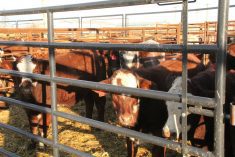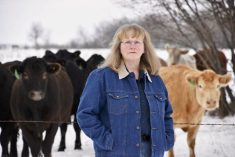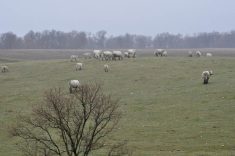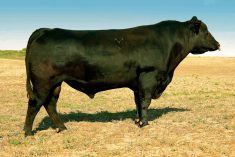Canada’s cattle herd shrank as of July 1 to its smallest in 17 years, while the number of hogs rose by mid-year for the first time in five years, Statistics Canada said Aug. 22.
Farmers had nearly 13.9 million head of cattle on their farms, down 0.8 per cent from a year ago, continuing a six-year slide. High costs of feed grains and a robust Canadian dollar have cut into farmers’ profits, although cattle prices are sharply higher than a year ago.
Farmers reported 11.9 million hogs at mid-year, up 0.8 per cent, marking their second straight quarter of growth. Supplies of sows and gilts, however – a measurement of the growth potential of hog supplies – dipped 1.1 per cent to their lowest level in 11 years.
Read Also

Pig transport stress costs pork sector
Popular livestock trailer designs also increase pig stress during transportation, hitting at meat quality, animal welfare and farm profit, Agriculture and Agri-Food Canada researcher says
Live cattle exports of 374,400 head during the first half of 2011 marked a drop of about 40 per cent from a year earlier.
The U.S. country-of-origin meat-labelling law, which Canada and Mexico are fighting through the World Trade Organization, has curtailed Canadian livestock exports to the United States for several years.
Hog exports eased 3.1 per cent during the second quarter to 1.4 million head.
U.S. Cattle Placements Surge
The number of cattle placed at U.S. feedlots in July rose 22 per cent from a year ago, a government report showed Aug. 19, as an unprecedented drought in the southern Plains continued to fuel the exodus.
It was the biggest increase on record in cattle placements in the month of July, and was well above the 17.3 per cent surge expected by analysts.
That pushed the total number of cattle at feedlots up by eight percentage points to 10.5 million head from a year ago, also above trade estimates for an increase of 7.3 per cent.
“The areas that we were putting those cattle on feed were Texas, Oklahoma, right in the heat belt, and Kansas. It’s still the same theory, placements are bigger because of the drought,” said analyst Don Roose with U.S. Commodities.
He said the lack of significant moisture in the places like Texas and Oklahoma forced ranchers to drive livestock into feedlots more aggressively, which is reflected in an increase of lighter cattle weights being placed at feedlots.


















